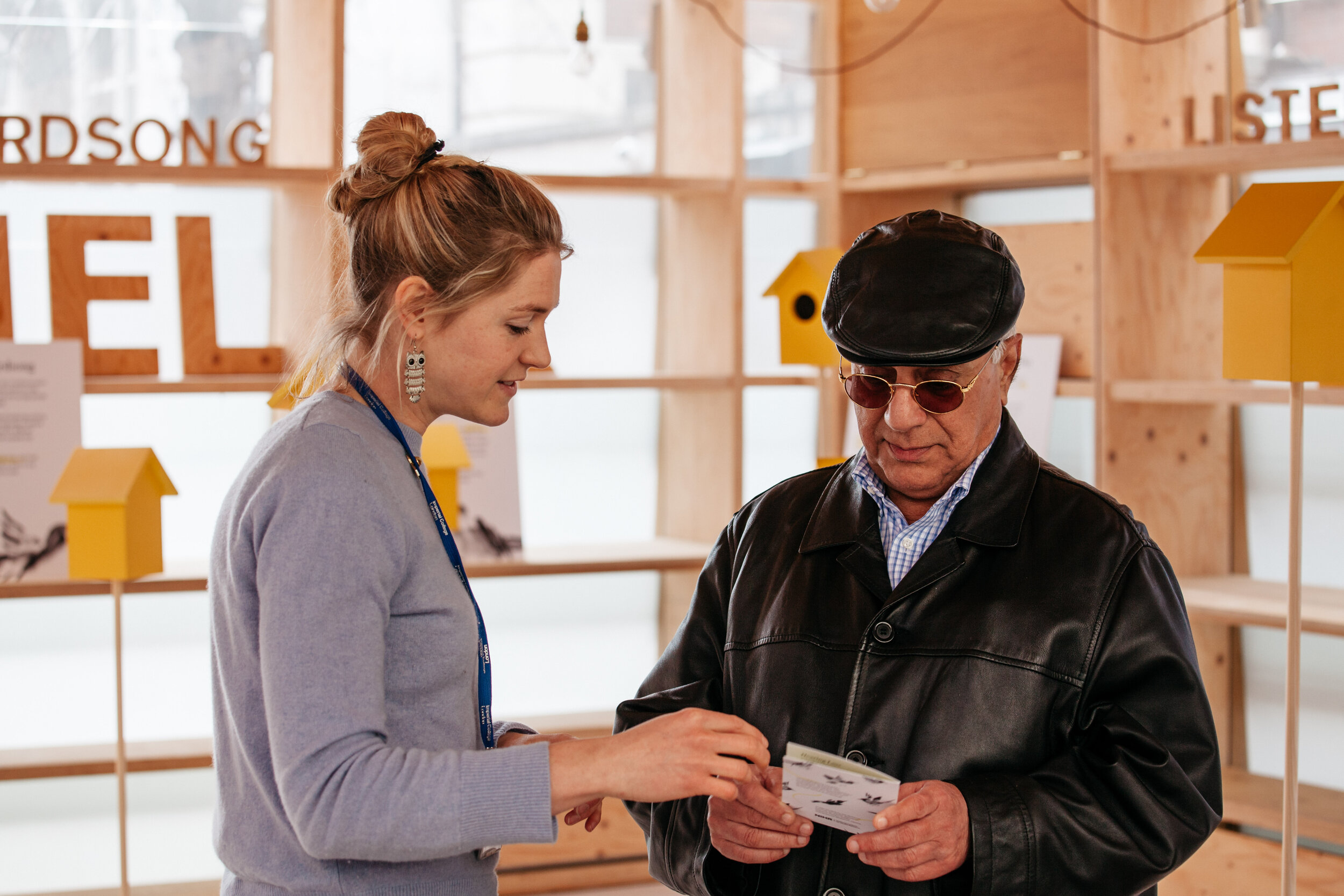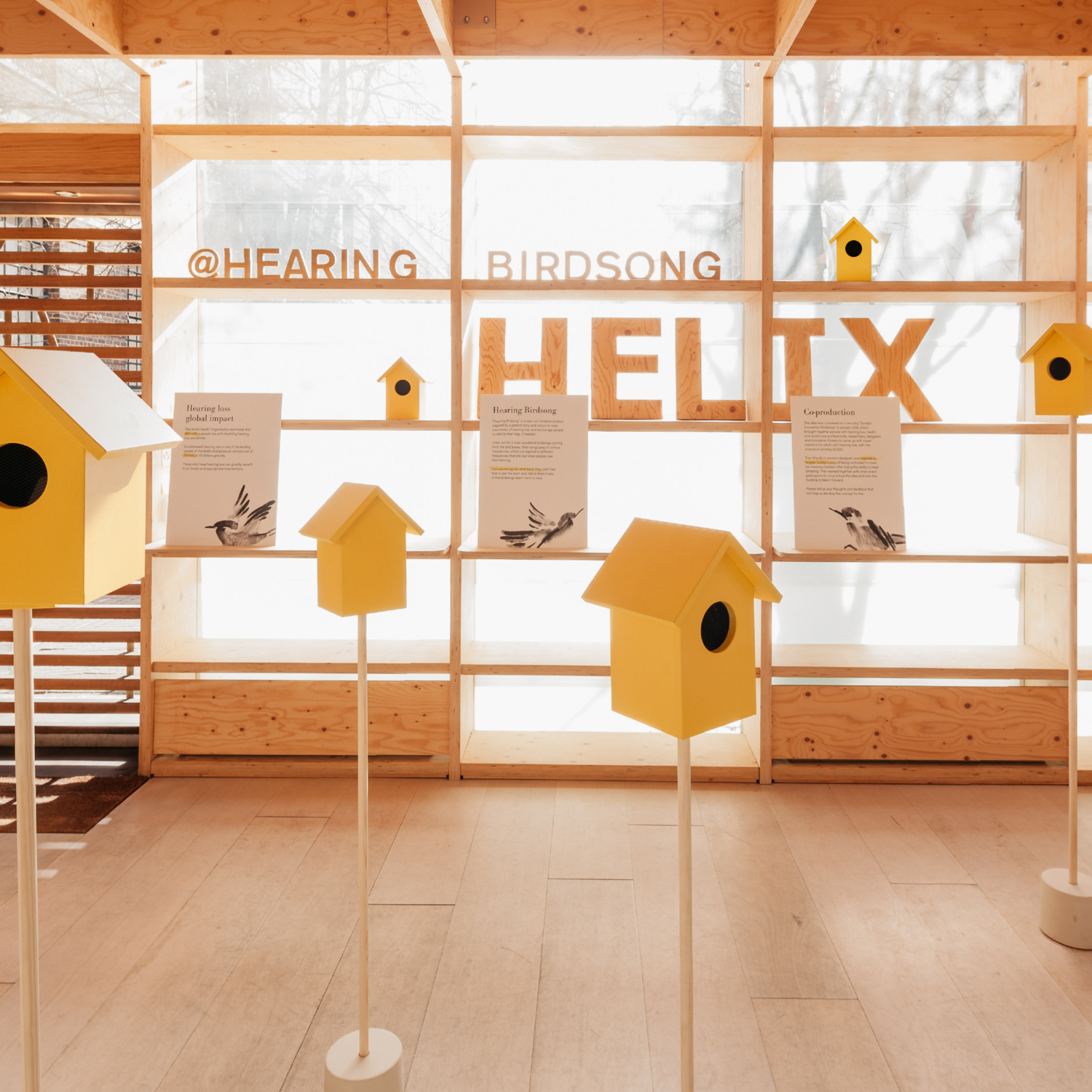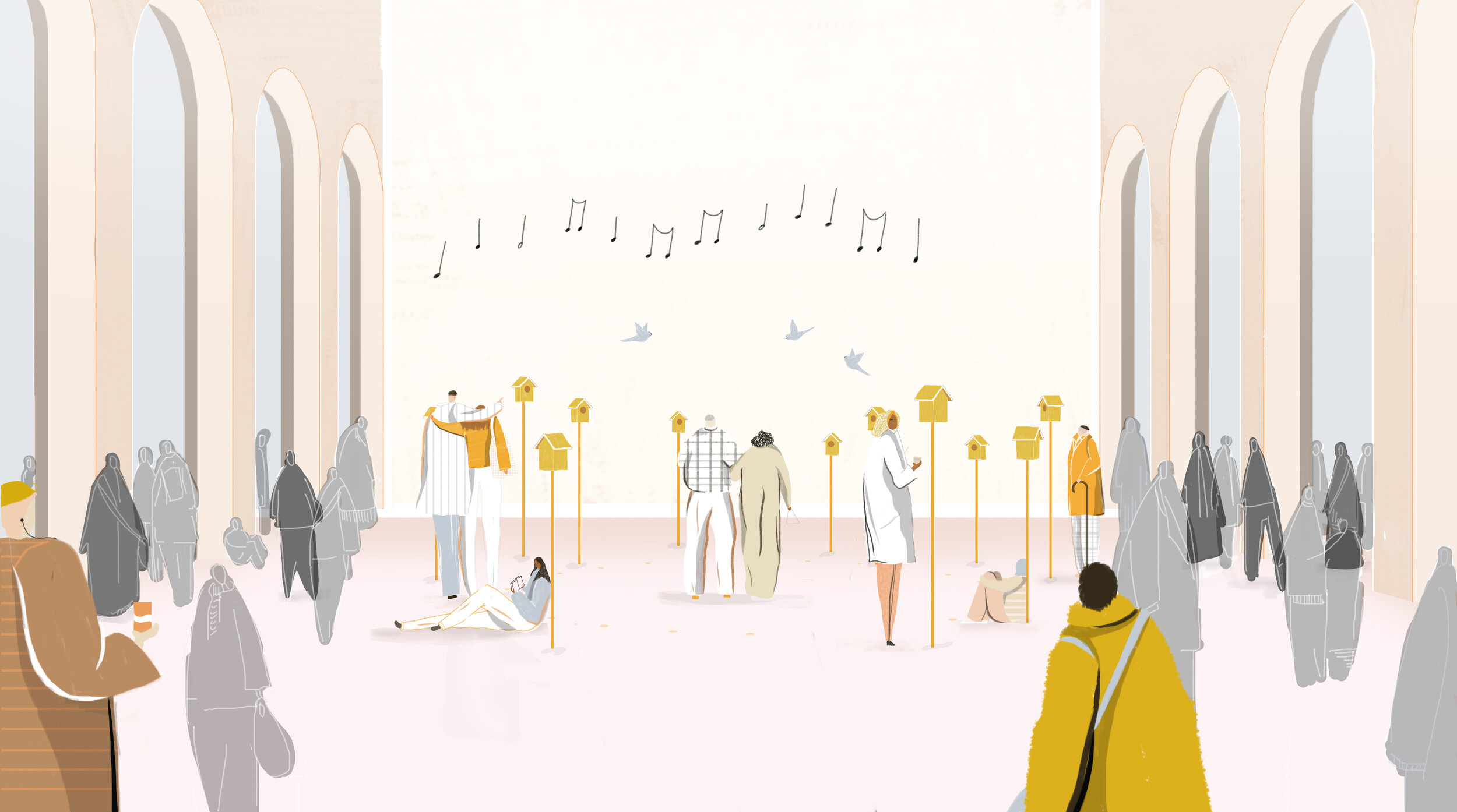
Hearing Birdsong is a project exploring people’s relationship with the health of their hearing.
Over 12 million adults in the UK have hearing loss, and yet 9 million of these are living without the benefit of hearing aids.
It’s a growing issue that affects young and old, with a powerful effect on quality of life: creating isolation, incapacity and vulnerability. And yet the way we diagnose hearing loss has not changed in 50 years.
The prototype we’ve developed - and the user-centred approach underpinning it - shines a light on the potential to humanise other clinical processes, by focusing on the intersection between technology and patient experience.
The Challenge
To humanise the clinical process of screening for hearing loss, in order to encourage early identification and treatment.
The Outcome
A prototype that is being publicly tested to generate feedback for further development.
Design Concept
Inspired by a patient’s story, Hearing Birdsong unites user-experience and technology to encourage early diagnosis and raise awareness of hearing loss.
Working alongside the Dyson School of Engineering and Imperial College, we have developed a prototype of a more humane hearing loss screen that uses modulated bird-calls within an ambient soundscape replicating certain frequency bands of a traditional test, instead of pure tones and white noise.
Following a successful grant application to the World Health Organisation, a 3D audio, virtual experience of Hearing Birdsong can now be previewed by playing the video below.
Team
The team is lead by Tom Woods, the co-founder of Kennedy Woods, a design studio that creates positive social impact through user-centred design & architecture.
Practitioners, researchers, engineers, designers and people with hearing loss have all participated in the development of Hearing Birdsong.
The Experience
Upon entering a Hearing Birdsong installation, participants are immersed in a richly detailed forest soundscape emitted from distinctive yellow bird boxes. This backdrop changes throughout the day, blending rolling thunderstorms, wind-rustled trees and flowing streams into a dynamic yet calming audio-experience.
Entering into the Birdsong installation might transport one back to a nostalgic childhood memory. Maybe it will bring a moment of much-needed tranquillity during a hectic city day.
What’s certain, is that each participant will experience something unique, powerful and memorable.
The Technology
Five familiar birds call out across the forest soundscape. Each has been digitally altered to occupy a narrow band of frequencies matching those examined during a traditional pure-tone test. Together, the birdsongs provide each participant with performance indicators across their entire hearing range.
Up to six speakers can be interconnected to form the audioscape installation. Each Birdbox speaker functions independently, with its own battery power supply, loudspeaker and digital receiver.
Each box is controlled via a fully bespoke software interface that will both educate participants on the topic, and gather helpful design insights for the project’s development.






Inside the Box
Each handmade box contains an active loudspeaker, a radio receiver and an external power source.
This simple configuration allows each box to function independently, controlled by a bespoke software interface.
Boxes can be distributed across public spaces to create immersive installations that create intrigue and raise awareness, or activated individually in clinical settings, for example in hospital waiting rooms.

“Blindness isolates from things. Deafness isolates from people.”
— Helen Keller
Meet the cast
Wren 4 - 8 kHz Very High
The wren’s song is cheerful, clear and ebullient. A schoolboy striving to complete his homework is said to have complained of “that shattering wren”. For the diminutive size of the bird it is one of the loudest of bird songs, and is also one of the highest-pitched ranging from about one full octave below to one full octave above the highest note on the piano.
Song Thrush 3 - 4 kHz
High
Arresting and brilliant is the song thrush in full voice. As a composer he displays a marked tendency to repeat the same phrase two or three times. He has a large repertoire (around 200 phrases) however, and enunciates his phrases with clarity and vigour.
Blackbird 1 - 2 kHz Medium
The blackbird has been called the Beethoven among birds. The Blackbird sings long, beautifully shaped phrases, well-defined in time and tone. The effect is mellow, flute-like and musical.
Cuckoo 350 - 750 Hz Medium Low
Males give their distinctive song to defend territories and attract mates. Females advertise with a softer version of the song. Both sexes give a lower-pitched, slower version when searching for nest sites and building the nest.
Collared Dove 250 - 350 Hz Low
The song (or “perch-coo”) is given mainly by unmated males from a conspicuous perch. It’s a soft coo-oo followed by two or three louder coos. You can often hear paired males give the three-parted “nest call” while nest-building: a coo-OO-oo, highest in the middle. Females sometimes call ohr ohr while sitting on the nest.














